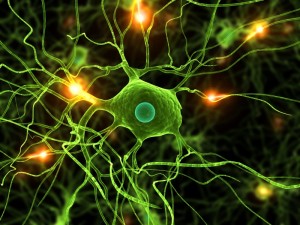Microglia are phagocytic cells that remove cellular debris and aggregated proteins from the brain and prune unwanted and degenerating synapses (1). When the brain is damaged, infected, or diseased, microglia are activated, and up-regulate their phagocytosis and inflammation functions. However, it is often unclear whether the activated microglia are protective, damaging, or a bit of both. This conundrum is particularly acute in neurodegenerative diseases such as Alzheimer’s disease (AD). A recent study by Keren-Shaul et al. (2) analyzed a mouse model of AD and show that as the disease progresses, some microglia progressively change their gene expression profiles from a basal homeostatic state to an intermediate state and then switch to a disease-associated state. This switch appears to depend on a gene called triggering receptor expressed on myeloid cells 2 (TREM2), which encodes a receptor protein on the surface of microglia, and which is itself an AD risk gene (3).







